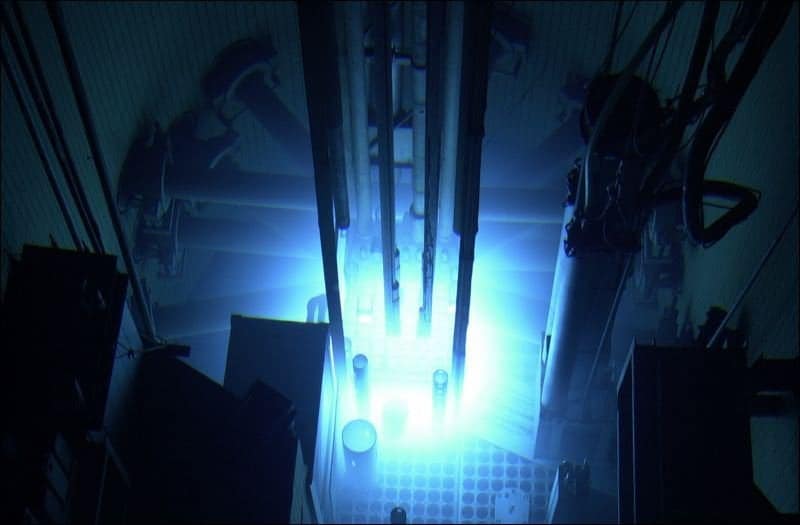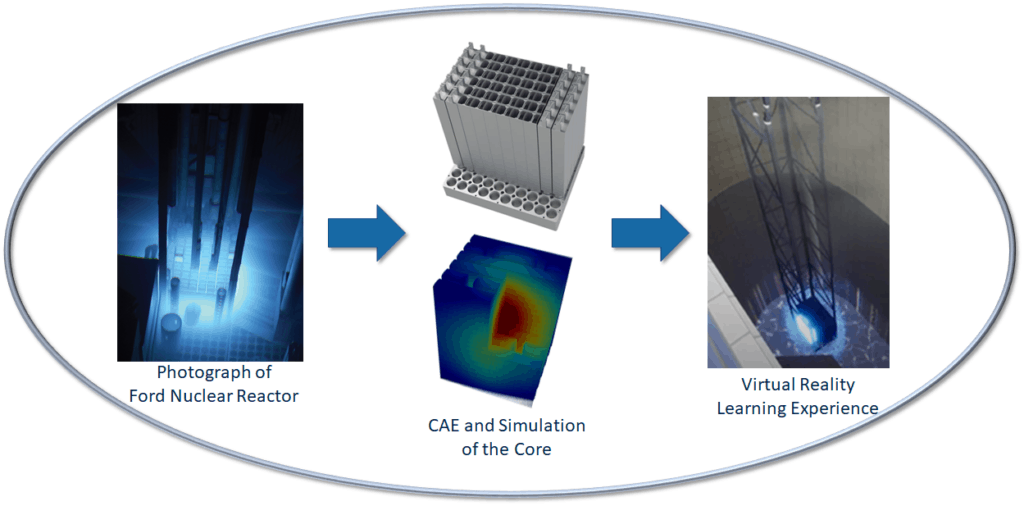
Yuxuan Liu and Brendan Kochunas receive funding to integrate heat transfer simulation in the Virtual Ford Nuclear Reactor
The funding was provided by the Office of the Associate Dean for Undergraduate Education.

The funding was provided by the Office of the Associate Dean for Undergraduate Education.

Over the past year, a project team within the U-M Department of Nuclear Engineering & Radiological Sciences (NERS) has been working with the XR Initiative in the Center for Academic Innovation to develop the Extended Reality Nuclear Reactor Laboratory—a virtual representation of the now decommissioned Ford Nuclear Reactor (FNR) that was once the center of the Michigan Memorial Phoenix Project (MMPP).
Yuxuan Liu, a member of the project team and an Assistant Research Scientist within NERS, has received a Simulation Grant from the Office of the Associate Dean for Undergraduate Education (ADUE) to develop a simulation of heat transfer in the original FNR. Understanding the heat transfer in a nuclear power reactor is essential to its operation and maintaining safety, making this virtual experience an important lesson of the NERS Extended Reality Nuclear Reactor Laboratory course. The other member of the project team is NERS Prof. Brendan Kochunas.
Liu and the project team will use Ansys Discovery to perform multiphysics conjugate heat transfer and neutronics calculations of varying fidelity to simulate the FNR. They will then import the simulation results into the virtual reality reactor laboratory to investigate the degree to which they can integrate real-time simulations.
The ADUE offered the Simulation Grants to support academic innovation and the College’s mission to introduce new pedagogical methods and advanced tools for the delivery of preeminent engineering education.
“I express my thanks to the office of ADUE for selecting our project, said Liu. “The nuclear reactor laboratory previously taught in NERS 455 was developed decades ago based on the physical FNR, so the context of laboratory activities was largely tied to the measurable quantities of a reactor, such as neutron fluxes, reactivity, etc. Since we have been developing the virtual reactor for the renovated laboratory course, the advanced computation tools that support real-time simulation, such as Ansys, will enable us to explore a broader range of data for the laboratory. This opens up new opportunities to enhance students’ learning experience that was not possible when doing experiments in a physical reactor.”
Liu joined NERS as a graduate student in 2010, received his PhD 2015, and stayed with the department as postdoc and then a research scientist. In his free time, he and his wife used to do a lot of biking across towns near Ann Arbor. They welcomed their first son last year as the pandemic began, and there has inevitably been less time for biking. Liu’s research interests include nuclear reactor physics, computational neutron transport and nuclide transmutation methods, resonance self-shielding and cross section data processing, multiphysics coupling, optimization algorithms, and machine learning.
“I believe that the future of humans is in nuclear energy, since this is the ultimate energy source (based on human’s knowledge so far) to expand living space from Earth to other planets or even outside of the Solar System,” said Liu. “I hope to contribute to the utilization of nuclear energy.”
“In addition to the sponsor, I also want to thank Prof. Kochunas and the XR team in the Center for Academic Innovation who have initiated a great project for the virtual reactor laboratory,” said Liu. “The proposed work is heavily based on it and I’m very proud to be part of the team.”
“I definitely think this is exciting,” said Kochunas. “Our efforts up until this point have been recovering historical information and just getting content into a VR environment. What this project does is take things one step further and put state-of-the-art physics simulations behind the VR experience.”